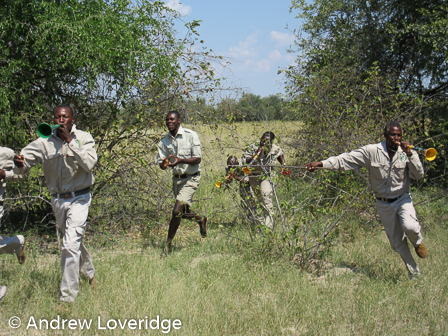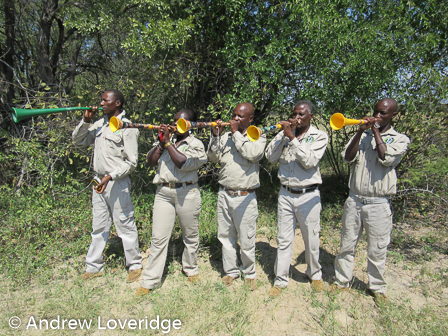News
Lion hazing as conflict mitigation tool
Loss of livestock to carnivores is one of the largest drivers of conflicts between people and wildlife, particularly in sub-Saharan Africa. The Long Shields Lion Guardians, part of WildCRU’s Trans-Kalahari Predator Programme, located on the periphery of Hwange National Park, uses innovative methods to alleviate livestock loss. The programme monitors GPS-collared lions and employs community members as Lion Guardians who are trained to harass lions (i.e., horn-blowing, chasing on foot) to prevent them from approaching households and preying upon livestock. This Programme has already been shown to reduce livestock depredation and improve community attitudes towards co-existence with carnivores.
A new paper in Conservation Science and Practice, led by WildCRU affiliate Dr. Lisanne Petracca in collaboration with co-authors from WildCRU and the State University of New York College of Environment and Forestry (SUNY-ESF), evaluated the long-term impacts of the Long Shields Programme, seeking to understand if lion space use and home range establishment differed before (2005-2012) and after (2012-2016) the programme began. Would lions avoid placing parts of their home ranges within community lands? Or would the impacts be smaller-scale, with lions not shifting their home ranges, but possibly avoiding habitat that was near households?
“This long-term nature of WildCRU’s Hwange Lion Project provided a really unique opportunity,” said Dr. Petracca, now a Postdoctoral Researcher at the University of Washington, USA. “While we knew the programme was effective at pushing lions away from households on a real-time basis, we were then able to use GPS data from those same lions before the Programme was established to determine if there were long-term shifts in space use as well.”
The authors found that, while sample sizes were small, male lions generally avoided households and shifted their home ranges away from community lands after Programme establishment. Female lions, however, did not exhibit the same long-term differences in space use, an unsurprising result given that females tend to remain in their natal home ranges (i.e., the area where they were born) and are often forced to seek shelter within community lands in the presence of hostile males. Thus, the authors suggest that male lions should be targeted in order to engender long-term shifts in lion space use and maximize Programme effectiveness.
Findings suggest that when applying lion hazing elsewhere, it is important to consider the accessibility of potential “refuge” habitat for individual lions to move into, but also to recognize that moving may not be an alternative for all problem animals depending upon their social context. Therefore, hazing should be considered one tool within an integrated effort of approaches (e.g., boma fortification) to resolve conflict with lions.
Dr Andrew Loveridge, the Director of WildCRU’s Trans-Kalahari Predator Programme, noted ‘this valuable study adds weight to the notion that understanding the behaviour, ecology and society of species that come into conflict with people is critical to solving these conflicts’.
Petracca, L. S., Frair, J. L., Bastille‐Rousseau, G., Macdonald, D. W., & Loveridge, A. J. (2021). Harassment‐induced changes in lion space use as a conflict mitigation tool. Conservation Science and Practice, e373.







